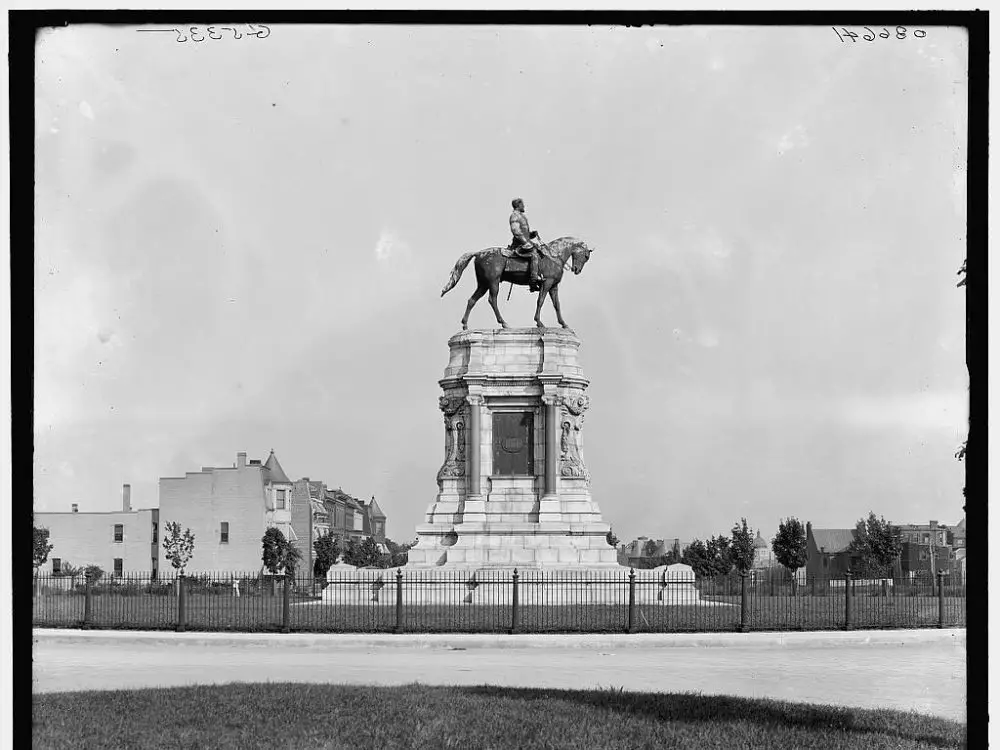CORRECTION: The original article mistakenly identified Nathan Damigo as the person who drove into counter-protestors in Charlottesville, subsequently killing Heather Heyer. Damigo is in fact the founder of the white supremacist organization Identity Evropa, and has been identified as a leader in the Unite the Right rally in which the killing took place.
On April 17, 2017, Charlottesville, Virginia, was flooded with conservative protesters. Among their numbers were self-identified neo-Confederates, American fascists and the Ku Klux Klan’s very own David Duke.
The stated goal of the rally was to symbolically unite American white-nationalist movements, and it could have been the rallying cry for similar protests across the South and the rest of the United States. This greater ambition was thwarted after James Alex Fields Jr. drove his car into a crowd of counter-protesters, sparking widespread condemnation from the media.
What is often forgotten in the chaos of the event was what sparked the protest in the first place, which was the city council’s decision to remove the famous Robert Edward Lee statue in the aftermath of the Charleston church shooting. The strife created by the decision to remove the Confederate monument was not unique to Virginia.
Breaking: Three years after a vote to remove a Robert E. Lee statue, Charlottesville has a new path toward removing its Confederate monuments.
"This is landmark legislation for Virginia," said Del. @SallyLHudson. https://t.co/MXtdkgUWHn
— The Daily Progress (@DailyProgress) April 11, 2020
Though nowhere near as disastrous or controversial, similar protests flared up in Florida, Georgia and other Southern states. A local company in charge of removing New Orleans’ monument had a vehicle set ablaze by an anonymous group.
Although the origins of the Unite the Right attendees and organizations was spread across the country, the Confederate legacy was the catalyst for their congregation, and Robert E. Lee’s legacy became the hill on which coasties, yankees and even canucks came to preach their belief in a divided society. This is because the South — for its relatively long and peaceful inclusion within the federation of states — has historically clashed with the ideals and aspirations of the rest of the country.
The quiet truth of American history is that there has always been a sharp divide among the North and South, down to each of their origins. Unlike the North, the South was not colonized by protestant radicals and their famous Puritan work ethic. Instead, many early Southerners were average, usually rural, Englishmen, often driven to the New World by a promise of fortune in the fertile soil.
Tellingly, it was Jamestown, Virginia, that is considered to be one of the first truly successful American colonies. It’s the one that sparked the infamous craze for slaves with the John Punch hearing, officially formalizing slavery as an institution. States like Virginia would play a key role in the American Revolution, and Southern colonies evolved very differently after the war. Unlike the North, the South’s conservative and hierarchical Episcopalian faith was not opposed to the institutions of slavery.
The South also urbanized much slower. Instead of centralizing power within cities, power became tied down to production of raw goods. Wealthy families called Planters held great wealth within plantations. These plantation owners were commonly referred to as the Southern Aristocracy, and their culture was far closer to that of the old-world nobility and their values than those of the North.
The whites not counted among their number were less educated and far poorer than their Northern counterparts, often reliant on the plantations and their institutions for livelihoods. This divide between the elite and landless working class created a unique set of feudal values that was completely at odds with the North.
The Planter society was, in large part, defined by a sense of elitism. It justified their virtue on bloodlines and family heraldry more so than the bootstrap mentality of the North. These figures looked to the slave societies of Rome and Greece as the pinnacles of human civilization, where the meek were left to toil in their rightful places, and the ruling class was free to engage in “higher” pursuits.
Racism became the bedrock on which stark class inequality stood on, as even the poorest yeoman farmer was given more respect and political authority than black men and women who labored in the same fields.
No one captured the South’s attitude more accurately than John C. Calhoun in his “Disquisition on Government,” where he explained that the primary function of government is to preserve society, which in turn is solely meant to “protect and preserve our race.” The South did not see itself as a hegemony, but rather as a “nation” of people, wholly distinct from the whims of the federal government, which they felt was an institution that increasingly threatened their elite culture.
The Civil War was the only practical solution to the newly succeeded South, as they had now come to identify with themselves far more than with their countrymen in the Union. Sherman’s March and the Burning of Atlanta (a tactic by no means unfamiliar to the Confederacy) only reinforced the sentiment that the Union was a hostile force, dead-set on annihilating proper Southern society.
Reconstruction did not quell the hostilities or deconstruct the Planters’ supremacy and ideology, as the wealthy families opposed policies aimed at decreasing their power, while quietly reforming Antebellum society into that of Jim Crow. For white nationalists of every kind, the Southern legacy and Confederate cause represents a “truer” vision of America, that it was founded for whites and the enlightened elite.
The Southern Succession movement is still strong, if subdued. Organizations such as The League of the South still promote the notion that the South is in fact in a state of permanent occupation, often referring to the region by the antiquated nickname “Dixie.”
Aside from the historical misgivings, there exists a strong sense of persecution in the South, especially in relation to the large coastal cosmopolitan centers of the United States. Many Southerners feel left out of the national narrative, denigrated by a media and culture that makes fun of their accents and history. How much of this is really true? Considering the preeminent privileges that Southern politicians and movements have historically held within the Union.
For decades, the Confederate statues stood as a physical manifestation of the Southern condition, openly defiant to federal ideals and racial progress, yet, intentionally overlooked. They are the quiet symbols of defiance to the narrative of progress, a bold reminder of the true power shapers of the post-Antebellum society. To attack them is to attack the Southern ideal, an action considered worthy enough for radicals to kill over.

















